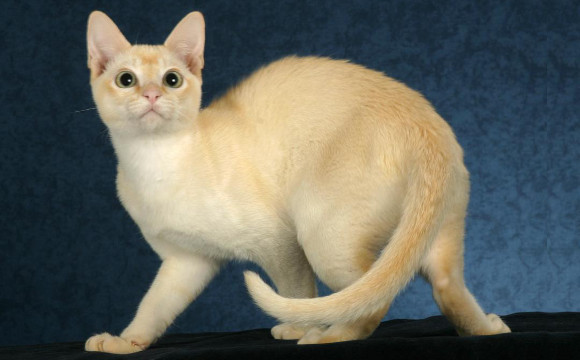Introduction
The Tonkinese cat breed, known for its friendly and lively nature, has a rich history intertwined with the Burmese and Siamese breeds. This guide explores the breed’s origins, characteristics, and care needs, making it an ideal resource for cat enthusiasts and potential owners.
History
The origins of the Tonkinese breed can be traced back to Southeast Asia, where both Burmese and Siamese cats coexisted for centuries. Early records from the late 1800s describe brown-colored cats with burnished chestnut coats and greeny-blue eyes, which were likely ancestors of the modern Tonkinese. These cats were initially brought to England from Siam (now Thailand), along with blue-eyed seal point Siamese.
The breed as we know it today began in the early 1960s when Canadian breeder Margaret Conroy crossed a sable Burmese with a seal point Siamese. The resulting cats, initially called “Golden Siamese,” had a unique combination of traits from both parent breeds. In 1971, the breed was renamed “Tonkinese” after the Bay of Tonkin, although the breed does not originate from this region.
By 1971, the Canadian Cat Association (CCA) granted Championship status to the Tonkinese, followed by recognition from other major cat registries over the next few decades. The breed faced some challenges, including a “five year rule” by the Cat Fanciers’ Association (CFA), but perseverance by breeders led to eventual acceptance and popularity.
Characteristics
Appearance: Tonkinese cats have a medium-sized, muscular build with a wedge-shaped head, almond-shaped eyes, and ears set high on their head. They come in three coat patterns: solid, pointed, and mink. The mink pattern, unique to the breed, features a subtle shading from point color to body color, creating a soft, silky appearance.
Color Varieties:
- Solid: Resembling Burmese cats, these have a uniform color across their body.
- Pointed: Similar to Siamese cats, these have distinct color points on their ears, face, paws, and tail.
- Mink: A blend of the two, featuring a subtle gradient from the body to point color.
Personality: Tonkinese cats are known for their affectionate and social nature. They are vocal, but their voices are milder than Siamese cats. They thrive on human interaction and enjoy being the center of attention. These cats are playful and intelligent, making them great companions for families with children and other pets.
Care and Maintenance
Diet: Tonkinese cats require a balanced diet to maintain their health and energy levels. High-quality commercial cat food, supplemented with occasional treats, ensures they receive all necessary nutrients. Fresh water should be available at all times.
Grooming: With their short, silky coats, Tonkinese cats have minimal grooming needs. Regular brushing helps reduce shedding and keeps their coat in good condition. Routine dental care, including brushing and providing dental treats, helps prevent dental issues.
Health: Tonkinese cats are generally healthy but can be prone to certain genetic conditions. Regular veterinary check-ups, vaccinations, and parasite control are essential for maintaining their health. Early detection and treatment of health issues can ensure a long, healthy life.
Exercise: These active cats require plenty of physical and mental stimulation. Interactive toys, climbing trees, and regular playtime keep them engaged and prevent boredom. They enjoy interactive play with their owners and other pets, making them ideal for active households.
Breeding and Genetics
Tonkinese cats are a hybrid breed with a unique genetic makeup. Breeding two mink Tonkinese cats together results in a mix of solid, pointed, and mink kittens. Understanding their genetics helps breeders maintain the breed’s characteristics and improve overall health.
Conclusion
The Tonkinese cat breed, with its rich history, striking appearance, and engaging personality, makes a wonderful addition to any home. Their affectionate nature, coupled with low maintenance needs, ensures they fit well into various lifestyles. Whether you’re a seasoned cat owner or looking to adopt your first feline friend, the Tonkinese cat is a breed worth considering.

